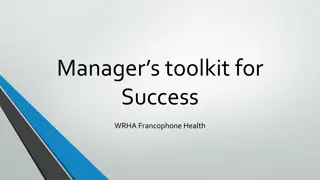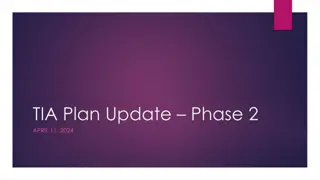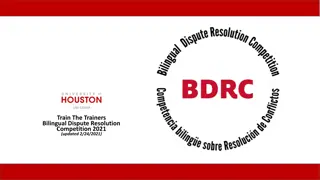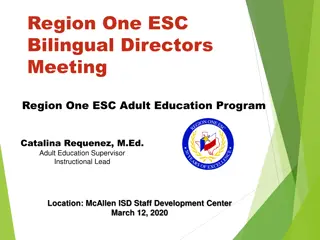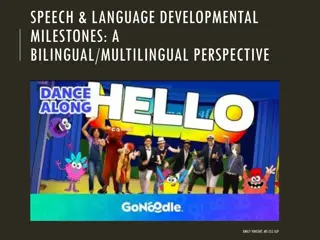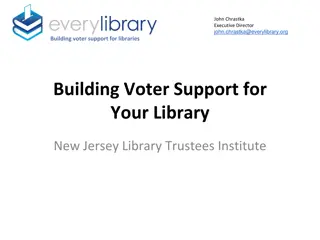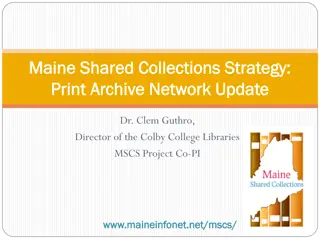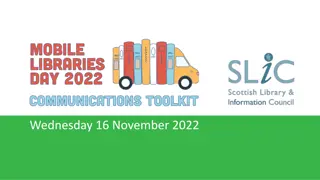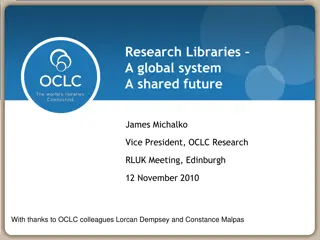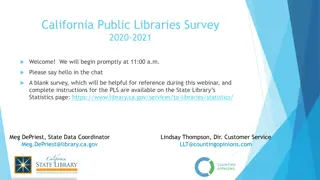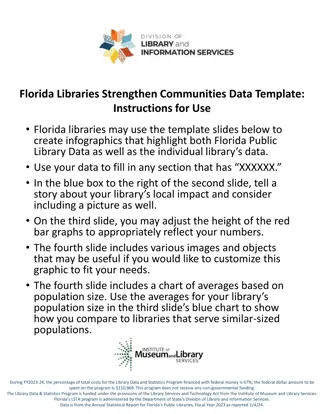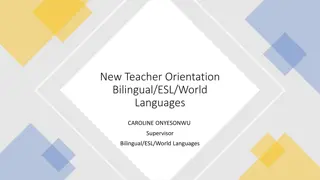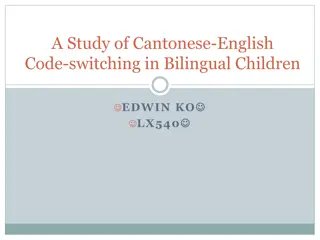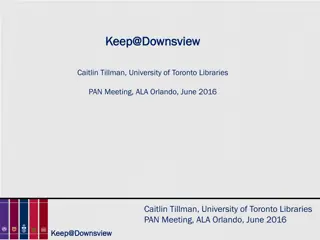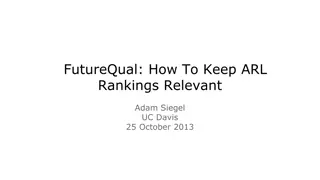Bilingual Storytime Strategies for Libraries
Explore strategies for hosting bilingual storytime sessions at libraries, even if you don't speak another language. Learn how to choose appropriate books, involve volunteers, and engage with diverse communities effectively. Discover different types of bilingual storytime formats and tips for attracting participants. Gain insights into reaching non-English speaking communities and tailoring programs to meet their needs.
Download Presentation

Please find below an Image/Link to download the presentation.
The content on the website is provided AS IS for your information and personal use only. It may not be sold, licensed, or shared on other websites without obtaining consent from the author. Download presentation by click this link. If you encounter any issues during the download, it is possible that the publisher has removed the file from their server.
E N D
Presentation Transcript
Bilingual Story Time Alia Shields Youth Services Librarian Cherry Hill Public Library
1.Can I do it (even if I don't speak another language)? 2. Will anyone come? 3. How do I start?
Choose books that feature characters from your target culture. Can I do it (even if I don't speak another language)? Choose books that have some words in your target language Read bilingual books in English while highlighting the target language. Yes! You have to be resourceful but it can be done! Add bilingual songs and rhymes while reading primarily in English. Find volunteers who are fluent in the target language to help!
Types of Bilingual Storytimes Bilingual Mixed Back and Forth One After Another Bilingual Activities One page is read in target language and then in English. Works best with short books. Can be difficult with longer stories. Books and activities are done in target language then repeated in English. Books are done in English with songs, rhymes, other activities done in target language. Can do with little knowledge of target language. Cer Storytime is conducted in English but books are read in target language. Can read longer stories. Helps to hear the language syntax and grammar.
Will Anyone Come? Know your audience. Get the word out. Use cultural celebrations. Respond to feedback. What is their goal? Partner community groups. We emailed ESL teachers about our programs and sent information home through the schools. Special programs for Dia de los Muertos, Cinco de Mayo, Dia de los Ninos and the Cherry Blossom Festival. Listen to parent's goals and expectations. Native speakers or language learners?
CHPLs Bilingual Storytime - Getting Started Type? Time of Day? Language? We had a multilingual Library Clerk who could assist so we decided to use a back and forth format. *We also mixed in books in English with Spanish vocabulary - sometimes inserting Spanish words ourselves. We started as an evening family storytime but the attendance was low and skewed younger. We found we had better attendance when we moved to an after- school afternoon storytime. Is there a non-English speaking community that you want to reach out to? We also spoke to ESL teachers to get a grasp of what languages we would want to target. We chose to start our storytime in Spanish because we had the most materials available in Spanish and it was the language our staff was most comfortable with. We changed our schedule to a 6 week block to encourage repeat attendance. *Good strategy if you are not fluent in the target language and widens the net of materials you can use!
CHPLs Bilingual Storytime - Elements Storytime with two voices Opening and closing songs Traditional songs and rhymes Counting rhymes and activities Repetition Books that reinforce color and animal vocabulary Repetition! Craft and take home materials.
Recommended Books Fire! Fuego! Brave Bomberos by Susan Middelton Elya My Abuelita by Tony Johnston In English with Spanish vocabulary. Maria Had a Little Lamb by Angela Dominguez Good for one voice or two. In English with Spanish Vocabulary.
Utah State Library - Bilingual Storytimes https://heritage.utah.gov/library/spanish-bilingual-storytimes REFORMA - Children and Young Adult Services http://www.reforma.org/content.asp?contentid=87 Online Resources Es divertido hablar dos idiomas! http://bilingualchildrensprogramming.blogspot.com/ Pinterest





